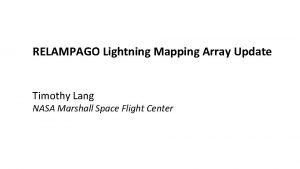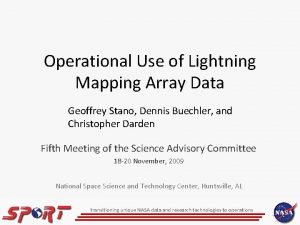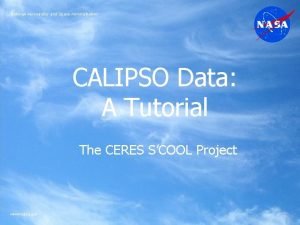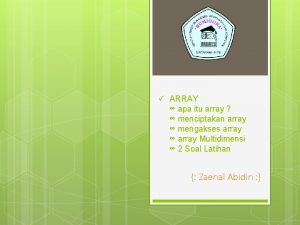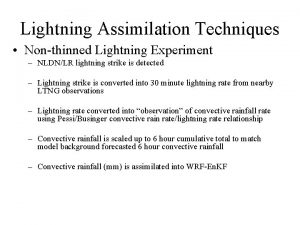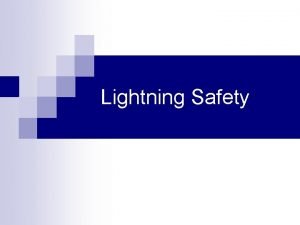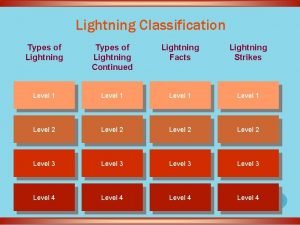RELAMPAGO Lightning Mapping Array Update Timothy Lang NASA









- Slides: 9

RELAMPAGO Lightning Mapping Array Update Timothy Lang NASA Marshall Space Flight Center

NASA LMA Deployment Team • • Timothy Lang, NASA lead Rich Blakeslee Walt Petersen Brad Zavodsky • • • Larry Carey, UAH lead Jeff Burchfield Matt Wingo Michael Solomon Joy Marich • Steve Goodman • Eldo Avila Acknowledgments • NOAA GOES-R Program • Wiebke Deierling • Steve Nesbitt • Paola Salio • Phil Bitzer • Betsy Goldemen • Carlos De La Vega • Eduardo Serena • Eric Bruning • Vanna Chmielewski • DOE-ARM • NCAR … and many more!

GLM Science Hypothesis for RELAMPAGO • Argentinian storms produce some of the highest flash rates ever recorded from space • Due to similarity in geographic and atmospheric environments between Argentina and the U. S. High Plains, we hypothesize that many of these storms have anomalous charge structures, with predominantly positive charge in the mid-levels • Thus, most intracloud lightning flashes are smaller, occur at lower altitudes, and occur in more optically thick portions of the cloud • Therefore, we hypothesize that GLM (and LIS) flash rates are biased low in many Argentinian storms, due to reduced optical detection efficiency

LMA Deployment Details • 11 -station network • Sites already selected • 6 -month deployment (~October 2018 – April 2019) • Realtime communications via Cloud. Gate + SIMs • Data QC and publishing within 6 months after deployment end

Range Error km Azimuth Error Radians Altitude Error Source Detection Efficiency (%) Simulated error characteristics km

Deployment Logistics • Delayed ~2 months due to difficulty in arranging NASAArgentina agreement • Air shipping arranged by NASA • Customs brokering managed by Serena Group • Site selection major assist by Eldo Avila (ARM-DOE providing one site; sharing of some NCAR sites) • Site survey and installation led by UAH • In-country monitoring during RELAMPAGO EOP (Nov-Dec 2018) • Remote monitoring during rest of deployment (possible maintenance trips to check/reestablish stations) • First results presented at AGU 2018/AMS 2019 if possible


Complementary RELAMPAGO Measurements • • • GOES-16 ABI/GLM NASA ISS-LIS Field Change Meters (UAH) Electric Field Mills (CU/NCAR) LF Detectors (CU) LEONA TLE camera network + Other Brazilian Lightning Sensors (USP/INPE) C-band polarimetric radars (CSWR, CSU, SMN, ARM-DOE) Mobile X-band Doppler radars (CSWR) Soundings Mobile/deployable near-surface meteorological measurements

Summary • NASA LMA deployment for RELAMPAGO moving forward – shipping in progress now • Aiming for October 2018 – April 2019 ops, inclusive of main RELAMPAGO EOP • Public QC’d data about a year from now

